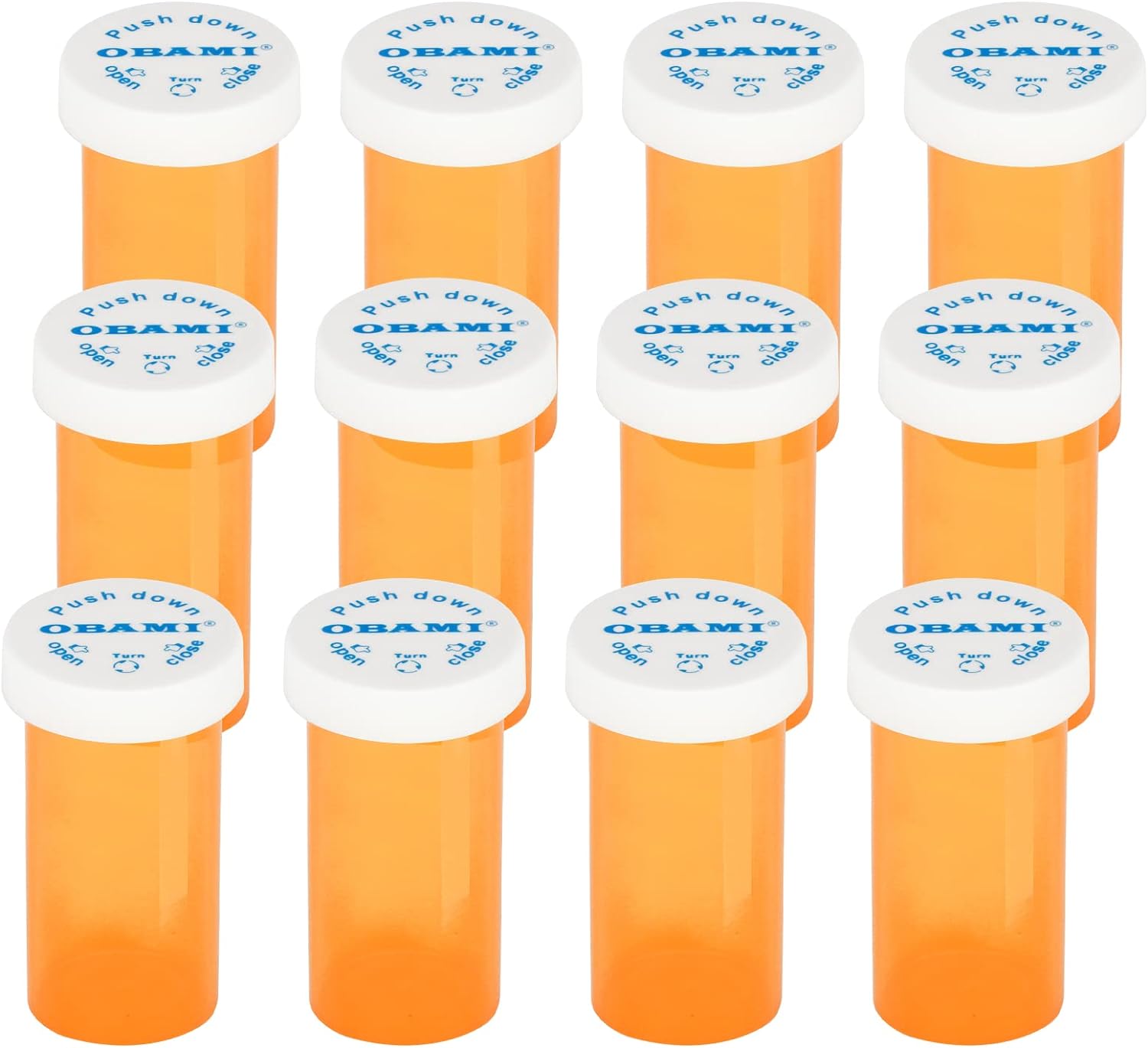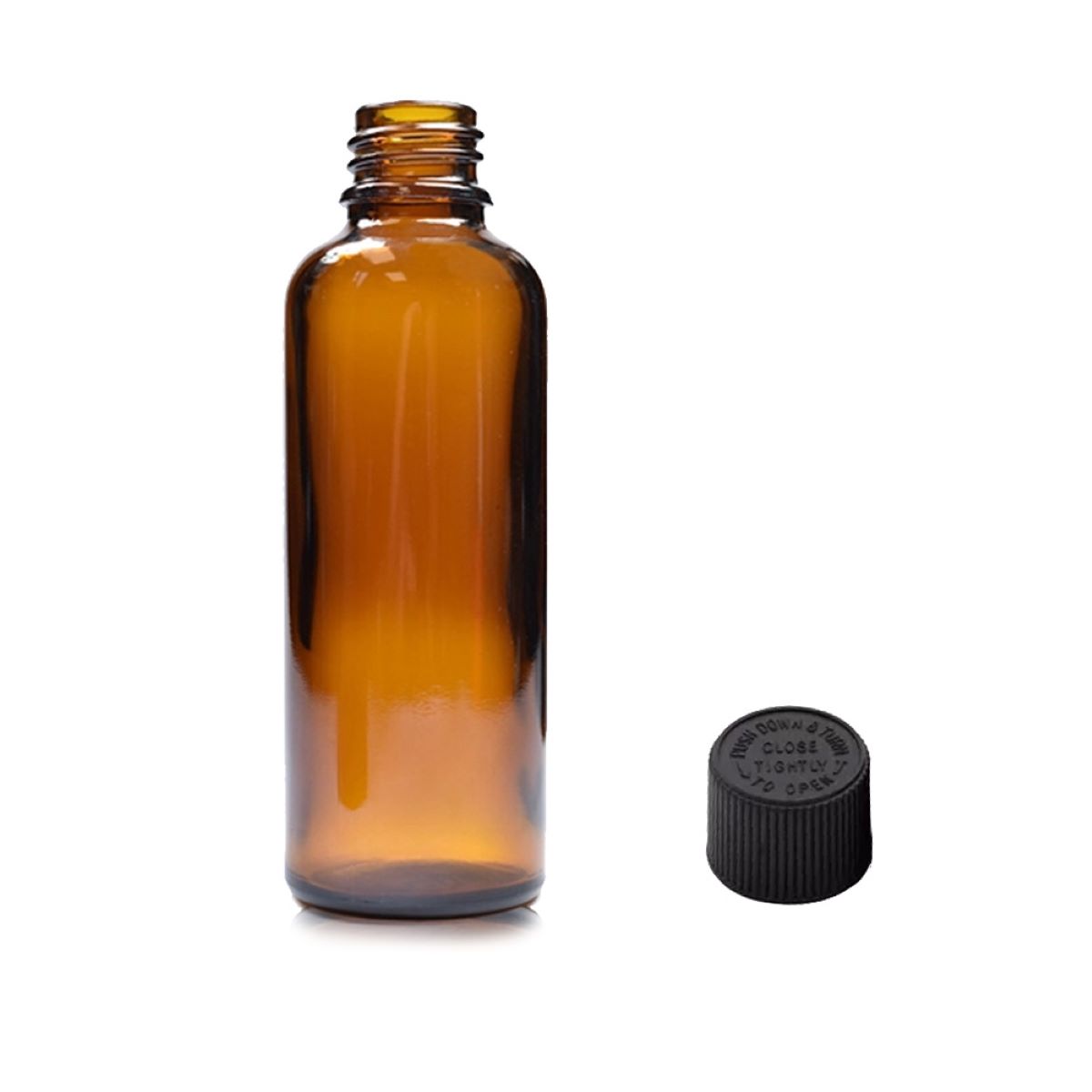Home>Maintenance & Safety>Safety Equipment & Products>How Did Childproof Caps On Medicine Come About?


Safety Equipment & Products
How Did Childproof Caps On Medicine Come About?
Modified: January 9, 2024
Discover the history and importance of childproof caps on medicine, a crucial aspect of safety equipment and products. Learn how these caps came about and why they are essential for safeguarding children.
(Many of the links in this article redirect to a specific reviewed product. Your purchase of these products through affiliate links helps to generate commission for Storables.com, at no extra cost. Learn more)
Introduction
Childproof caps on medicine bottles are a vital safety feature that has revolutionized the way we store and safeguard medications in our homes. These innovative caps are designed to prevent young children from accessing and ingesting harmful substances, significantly reducing the risk of accidental poisonings. The introduction of childproof caps represents a significant milestone in the ongoing efforts to enhance household safety, particularly in environments where medications are commonly stored.
Childproof caps, also known as safety caps or child-resistant closures, play a crucial role in mitigating the potential dangers associated with medication accessibility. The implementation of these caps has had a profound impact on public health, as they serve as a protective barrier against unintentional ingestion, especially among curious and unsuspecting children. Understanding the history, impact, regulations, and future developments related to childproof caps is essential for comprehending the significance of this safety measure and its enduring relevance in modern households. Let's delve into the fascinating journey of how childproof caps on medicine came about and the profound impact they continue to have on our well-being.
Key Takeaways:
- Childproof caps on medicine bottles were invented in 1967 by Dr. Henri Breault to keep kids safe from accidentally ingesting harmful substances. They have significantly reduced pediatric poisonings and continue to evolve for even better safety.
- Childproof caps are crucial for keeping medications out of reach of children. They have led to fewer accidental poisonings, raised awareness about safe medication storage, and prompted industry-wide safety standards.
Read more: What Is A Childproof Cap?
The History of Childproof Caps
The origin of childproof caps can be traced back to the early 20th century when concerns about accidental poisonings among children began to garner widespread attention. In response to this pressing issue, pioneering individuals and organizations embarked on a mission to develop innovative solutions that could effectively restrict access to medications while maintaining ease of use for adults. The result of these efforts was the introduction of childproof caps, a groundbreaking invention that revolutionized medication safety in homes across the globe.
The first childproof cap was invented by Dr. Henri Breault, a pediatrician from Canada, in 1967. Dr. Breault’s invention was inspired by his firsthand experiences with childhood poisonings and the urgent need for a reliable preventive measure. His pioneering design incorporated a push-and-twist mechanism, which required a specific combination of movements to open the medication container. This innovative approach effectively thwarted young children’s attempts to open the bottles while allowing adults to access the contents with relative ease.
Following Dr. Breault’s breakthrough, childproof caps gained widespread recognition and adoption within the pharmaceutical industry. The United States Consumer Product Safety Commission (CPSC) played a pivotal role in advocating for the integration of child-resistant closures on a wide range of household products, including medications. Subsequently, the Poison Prevention Packaging Act of 1970 was enacted in the United States, mandating the use of child-resistant packaging for various potentially hazardous household substances, including medications and chemicals.
Over the years, advancements in technology and human factors engineering have further refined the design and functionality of childproof caps, enhancing their effectiveness and user-friendliness. Today, childproof caps are an integral component of medication packaging, offering a reliable safeguard against accidental poisonings and promoting peace of mind for caregivers and parents.
The evolution of childproof caps stands as a testament to the power of innovation and proactive problem-solving in addressing critical public health concerns. This remarkable journey underscores the unwavering commitment to protecting the well-being of vulnerable populations, particularly children, and serves as a testament to the positive impact of human ingenuity on enhancing safety in everyday environments.
The Impact of Childproof Caps
Childproof caps have had a profound and far-reaching impact on medication safety and public health since their inception. Their introduction has significantly reduced the incidence of accidental poisonings among children, making them a cornerstone of household safety measures. By effectively restricting access to medications, childproof caps have mitigated the potential dangers associated with accidental ingestions, offering a crucial layer of protection for families and caregivers.
One of the most notable impacts of childproof caps is the substantial decline in pediatric medication poisonings. Prior to the widespread adoption of these safety measures, incidents of young children gaining access to medications and consuming them inadvertently were alarmingly common. Childproof caps, with their intricate yet intuitive mechanisms, have proven to be a formidable deterrent against such occurrences, contributing to a marked reduction in the number of pediatric poisonings and related emergency room visits.
Furthermore, the implementation of childproof caps has instilled a greater sense of confidence and reassurance among caregivers and parents. Knowing that medications are securely sealed with child-resistant closures provides peace of mind, especially in households with young children or curious toddlers. This enhanced peace of mind contributes to a safer and more secure home environment, fostering a culture of responsible medication storage and handling.
Childproof caps have also played a pivotal role in raising awareness about the importance of proper medication storage and the potential risks associated with accidental ingestions. Their presence on medication containers serves as a visual reminder of the need for vigilance and caution, prompting individuals to store medications out of reach and sight of children. This heightened awareness has contributed to a more informed and proactive approach to medication safety within households, further reducing the likelihood of unintentional poisonings.
Moreover, the impact of childproof caps extends beyond individual households, influencing industry practices and regulatory standards. Their widespread adoption has prompted pharmaceutical manufacturers and packaging designers to prioritize safety and child-resistant features in product development, leading to the integration of innovative and effective closure mechanisms across a broad spectrum of medications and over-the-counter products.
In essence, the impact of childproof caps transcends mere functionality; it encompasses a fundamental shift in attitudes and practices related to medication safety. By safeguarding children from the potential hazards of accidental ingestions, childproof caps have become an indispensable element of responsible medication management, promoting a culture of vigilance, awareness, and proactive prevention within homes and communities.
Always store medicine out of reach of children, preferably in a locked cabinet. Remember to close the childproof cap tightly after each use to prevent accidental ingestion.
Regulations and Standards for Childproof Caps
The widespread recognition of the critical role played by childproof caps in safeguarding medication accessibility has led to the establishment of stringent regulations and standards governing their design and implementation. These regulations are aimed at ensuring the consistent efficacy and reliability of child-resistant closures across various types of medication packaging, thereby upholding the highest standards of safety for consumers, especially in households with young children.
In the United States, the Consumer Product Safety Commission (CPSC) oversees the regulations pertaining to child-resistant packaging through the Poison Prevention Packaging Act (PPPA) of 1970. This landmark legislation mandates the use of child-resistant packaging for a wide array of household substances, including prescription and over-the-counter medications, as well as certain hazardous chemicals. The CPSC collaborates with industry stakeholders to establish and enforce specific testing protocols and performance standards that childproof caps must meet to receive certification.
Pharmaceutical manufacturers and packaging suppliers are required to adhere to rigorous testing procedures outlined by the CPSC to ensure that their products comply with the prescribed child-resistant packaging requirements. These tests assess various factors, including the cap’s resistance to opening by young children, the ease of use for adults, and the durability of the child-resistant features over time. Only products that successfully meet these stringent criteria are authorized to bear the designation of child-resistant packaging.
Internationally, similar regulatory frameworks and standards govern the implementation of childproof caps in medication packaging. Regulatory bodies in various countries collaborate with industry experts to establish harmonized guidelines that prioritize the safety and well-being of consumers, irrespective of geographical boundaries. These efforts underscore the global commitment to upholding consistent and stringent safety standards for child-resistant closures.
Furthermore, ongoing advancements in technology and materials science continue to drive innovation in the development of childproof caps, leading to the introduction of increasingly sophisticated and effective closure mechanisms. These advancements are accompanied by continuous refinement of testing methodologies and standards to ensure that child-resistant packaging remains at the forefront of medication safety, adapting to evolving consumer needs and industry best practices.
By adhering to robust regulations and standards, pharmaceutical companies and packaging manufacturers demonstrate their unwavering dedication to prioritizing consumer safety and well-being. The rigorous oversight and adherence to established protocols underscore the collective commitment to delivering medications in packaging that offers reliable protection against accidental ingestions, thereby contributing to a safer and more secure healthcare landscape for individuals and families.
The Future of Childproof Caps
The evolution of childproof caps continues to be shaped by ongoing advancements in materials, technology, and human factors engineering, paving the way for innovative developments that promise to further enhance medication safety in the years ahead. As the healthcare and pharmaceutical industries embrace new opportunities for improvement, the future of childproof caps is poised to witness transformative changes that will reinforce their role as a cornerstone of household safety and responsible medication management.
One of the key areas of focus in the future of childproof caps lies in the integration of smart and adaptive technologies. Emerging innovations aim to leverage sensor-based systems and intelligent packaging solutions to create child-resistant closures that can dynamically adjust their level of protection based on environmental cues or user interactions. These advancements have the potential to offer heightened security while maintaining user accessibility, catering to diverse needs and usage scenarios.
Furthermore, the exploration of sustainable and eco-friendly materials for childproof caps aligns with the broader industry-wide commitment to environmental stewardship. Efforts to develop biodegradable and recyclable components for child-resistant closures reflect a conscientious approach to packaging design, ensuring that safety measures are harmoniously aligned with ecological sustainability, thereby reducing the environmental footprint of medication packaging.
Another promising avenue for the future of childproof caps involves the convergence of design aesthetics and functionality. By seamlessly integrating visually appealing and ergonomically designed child-resistant closures into medication packaging, manufacturers can enhance the user experience while upholding uncompromising safety standards. This fusion of form and function not only elevates the overall appeal of medication packaging but also reinforces the importance of intuitive and user-friendly safety features.
Moreover, the future of childproof caps is intrinsically linked to ongoing research and collaboration aimed at understanding and addressing evolving safety needs. Industry stakeholders are actively engaging in dialogue and partnership initiatives to identify and respond to emerging trends and consumer preferences, ensuring that child-resistant closures remain responsive to the diverse and evolving requirements of modern households.
As the landscape of healthcare and consumer safety continues to evolve, childproof caps are poised to remain at the forefront of proactive medication safety measures. By embracing technological innovation, sustainable practices, and user-centric design principles, the future of childproof caps holds the promise of delivering enhanced safety, convenience, and peace of mind for individuals and families, reaffirming their indispensable role in promoting responsible medication storage and usage.
Frequently Asked Questions about How Did Childproof Caps On Medicine Come About?
Was this page helpful?
At Storables.com, we guarantee accurate and reliable information. Our content, validated by Expert Board Contributors, is crafted following stringent Editorial Policies. We're committed to providing you with well-researched, expert-backed insights for all your informational needs.
















0 thoughts on “How Did Childproof Caps On Medicine Come About?”